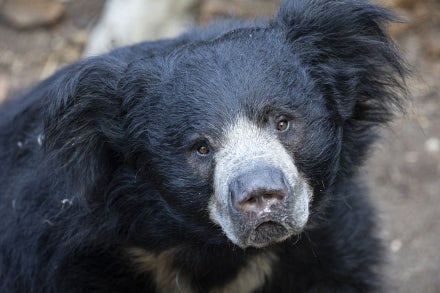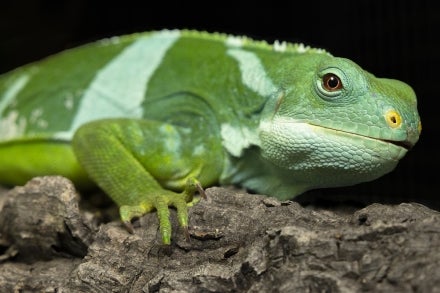Image

 For elephant calves that are rescued and brought back to health, it is hoped that they will one day be reintroduced back into the wild, where they will spend the majority of their long lives roaming the rangelands of northern Kenya along with other wild elephants. This is a lofty goal, but the first steps toward this end are already being realized, through a cooperative effort led by Reteti and supported by the expertise of the Kenya Wildlife Service, the Northern Rangelands Trust, Save the Elephants, leaders in technological innovation such as Vulcan Productions, and San Diego Zoo Global. Together, we are supporting the vision of the local Samburu community.
For elephant calves that are rescued and brought back to health, it is hoped that they will one day be reintroduced back into the wild, where they will spend the majority of their long lives roaming the rangelands of northern Kenya along with other wild elephants. This is a lofty goal, but the first steps toward this end are already being realized, through a cooperative effort led by Reteti and supported by the expertise of the Kenya Wildlife Service, the Northern Rangelands Trust, Save the Elephants, leaders in technological innovation such as Vulcan Productions, and San Diego Zoo Global. Together, we are supporting the vision of the local Samburu community.

No Simple Task
It might be tempting to think that reintroducing rescued wildlife is straightforward: rescue, rehabilitate, release. However, while the complexities of such an endeavor can be immense with just about any species, there are few contexts that match the challenges associated with the reintroduction of rescued African elephants into rangelands that are also important to human communities. Elephants are highly intelligent, long-lived, exquisitely social, and potentially dangerous—even lethal—to people. Add to these challenges that young elephants learn critical life skills from their mothers and family members over the course of years, and that there are limited data on the success or failure of previous efforts, and you have yourself one heck of a challenge. However, breaking the process down into stages, building partnerships, and capitalizing on what we know about the species through long-term monitoring provides a means to start cautiously moving toward meaningful progress. [caption id="attachment_136402" align="aligncenter" width="800"] WELLNESS CHECK
WELLNESS CHECKReteti veterinary staff examine a rescued orphan.[/caption] At Reteti, the wildlife care staff—all from the local pastoralist community—provide critical care to these young elephants, ensuring that they regain their health, and thrive after rescue. Important to this endeavor, however, is that working alongside the wildlife care staff is the research staff—also from the local community. These researchers are tasked with collecting systematic data on the behavior and social interactions of the orphans each day. These data not only allow us to track individual behavioral development, but also allow us to analyze the social relationships among the calves in a quantitatively rigorous way. From these analyses, the research team can make informed, evidence-based recommendations to the management team as to the readiness of individuals for release, and regarding which elephants have strong social bonds, reflecting the formation of a resilient, cohesive social group.

So Hard to Say Goodbye
The dedication of the wildlife care and research staff to the goals of the program, and to each elephant individually, is evident when it’s time to make the move from Reteti to the first stage of reintroduction at the Sera Wildlife Conservancy. It is clearly hard for the staff to say goodbye to their charges, but there is also tremendous excitement. These young elephants—rescued from wells or other traumatic circumstances—cared for over long months, through thick and thin, are about to step out into the wild without their human caregivers. This is an enormous transition, and tracking the elephants’ progress as they adjust to their new lives requires an intensive, coordinated effort. [youtube video=ttps://youtu.be/1ox36lZjG0A ]COME TO AFRICA! Experience the Reteti Elephant Sanctuary in 360 degrees. Put yourself there using any internet-linked device. Don’t forget to take a good look around—in all directions!
High-tech Monitoring
The Sera Conservancy is a protected home to a range of endangered species. This 272-acre habitat is “Step 1” of the elephant calves’ free-ranging lives. Once here, a whole different chapter of research monitoring kicks into gear. Satellite tracking—led by Save the Elephants—and strategically placed trail cameras enable the entire team to follow the movements of the orphans on a near-realtime basis. Thanks to long-term collaborations between Northern Rangelands Trust, Save the Elephants, and Vulcan, tracking data are integrated into an app-based system that allows us to follow the movements of the orphans and other elephants in the Conservancy from our smartphones. These data provide us with critical insights into their movements and group cohesion. The trail cameras are managed by the research team at the release site, and from these images and video recordings, we can assess the body condition of the calves and measure their social interactions with wild elephants. It is truly mesmerizing data to observe, and has given us critical insights into how each of the calves are doing. [caption id="attachment_136404" align="aligncenter" width="800"] SMALL BUT MIGHTY
SMALL BUT MIGHTYReteti’s small lab is a critical resource in the treatment and rehabilitation of orphaned calves.[/caption] Successful reintroduction is about more than immediate survival. The shared goal of the Reteti initiative is to ensure that these young elephants ultimately lead a life as full as that of an elephant raised with its family. It will be years before we know whether the released orphans truly have the skills needed to thrive as they roam about the rangelands of northern Kenya, but the Reteti team is committed to continue science-based monitoring, so that we can maximize what is learned and share it with others.

Essential Elephant Care
Amidst a global pandemic, orphaned elephants still need human care. The dedicated staff at Reteti are essential workers and continue to look after 20 elephant calves around the clock. Wildlife care specialists, rangers, and veterinarians feed, protect, and provide medical care for these animals. Orphaned calves often need specialized care when they are first rescued. Reteti staff recently mobilized to rescue two new orphaned calves—both with wounds that required immediate medical treatment. Veterinarians and veterinary technicians rushed to provide the help these animals needed to begin their road to recovery—and ultimately, their return to the wild. –Patricia Gaffney, DVM, Ph.D., San Diego Zoo Global



